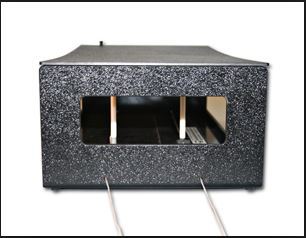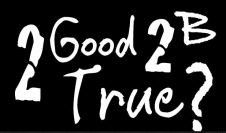Among the many qualities required of every aspiring airman in the Army Air Force in World War II was the ability to distinguish the distance relationship between two similar but abstract nearby objects—that is, to say which is closer and which farther without clues from the nature of the objects themselves or from their surroundings. The perception of depth in this way depends upon the natural focusing mechanism of the eyes coupled with their ability to converge laterally upon any point in space. I had no reason to believe that my eyes were any different in this regard from those of any other.
When called up by the draft at the age of eighteen in June of 1943 [just a week or so after graduating from high school] we were summoned to a building on Commonwealth Avenue in Boston to begin our induction into the Army. After having filled out much paperwork and having sat through interviews by uniformed officers—one certainly a psychologist—we spent the rest of the day shuffling slowly through long lines stripped to our undershorts and undergoing various physical probings, needle-stickings, and examinations. At day’s end we were free to return home for a period of about two weeks before reporting for duty and shipment out to Fort Devens and the duration.
Being drafted meant that you joined the Army in some as yet unknown and unassigned capacity: the infantry, artillery, intelligence, ordnance, etc. there being no obvious way at the outset to direct your course. The idea of the infantry seemed worrisome—I had many high school classmates who served in that gritty service almost all of whom returned after the War. But, as it happened on that afternoon, upon leaving for home I passed a desk with a sign and a recruiting officer looking for men to join the (then) Army Air Force. I stopped by. A limited number of applicants could be taken. I filled out an application and found that I must return in a day or so for another round of induction indignities. I went home with fantasies of flying beginning to fill my head. It certainly seemed better than the alternatives.
At that next round I discovered that I had just barely met the Air Force body weight requirement. The lower limit was 111 pounds for my height—I weighed in at 112. (I had been previously turned down by the Navy V-12 college program for having been too short—I was 5’-2”.) Among other things, after the eye test (luckily I was 20/20), there was a test for depth perception.

In a long narrow space about twelve feet from a chair was a large black screen with a small rectangular window cut out about the size of a post card. Through the window I could see two vertical white lines about two inches apart and as wide as a pencil, both against a black background. The operator showed me that the lines were really white sticks that could be moved by pulling the two strings he handed me; as one stick moved forward the other moved back. The track carried a scale visible only to the operator for observing their separation. I was to be given three attempts to set the sticks equidistant from me; side by side. I pulled the strings watching the sticks move back and forth and stopping when they seemed even.
After my three tries the operator told me I was outside the allowed three millimeter limit and that I had failed. My heart sank. Was I for this to be denied the chance to join the Air Force? “Yes; unless you can pass this test. You will be permitted two re-tests, one next week and one the week after that.” But, gee, I had to report for active duty in a week and would be able to make it for only that one chance.
I fretted all the way home and immediately upon arriving I went to the basement and, several hours later, had fashioned a passable facsimile of the depth perception apparatus. I began to practice. When my father came home from work he enthusiastically joined me and we spent the evening I pulling the strings and Dad reading the scale and taking notes. At first I wasn’t very good at it but practice seemed to work. By the end of the week I could line up the sticks almost perfectly. At the induction center I passed the re-test easily and began my wartime Air Force career.
Many months passed. After induction at Fort Devens we cadets were shipped by train to Greensboro, North Carolina for a summer of basic training pretty much indistinguishable from that of any other Army service—drill sergeants, forced marches, heat, mud, mosquitoes, and poison ivy. Thence to the University of Cincinnati for a fall of college-level courses in mathematics, physics, geography, and English. It was during this period that were given ten hours of instruction in flying Piper Cubs.
 WCA & Piper Cub J-3 (1943)
WCA & Piper Cub J-3 (1943)
Near the end of that year [1943] we were sent to San Antonio, Texas to undergo a rigorous classification process at the end of which we hoped to emerge as qualified to attend pilot, bombardier, or navigation school, graduation from which guaranteed you silver “wings” and a commission as 2nd Lieutenant in the Army. Those not considered qualified were assigned to aerial gunnery or aircraft maintenance schools and graduated as non-commissioned officers. I had decided that my chances of getting through the rigors of pilot training were slim and settled on aiming for aerial navigation as more suited to my temperament.
Once again we were confronted by a battery of many tests to prove aptitudes in mathematics, physics, reading comprehension, balance, coordination, reaction time, spatial manipulation, etc. And again, near the very end: depth perception.
As I sat facing the white sticks with the strings in my hand I panicked. Nothing to do but try my best. I moved the sticks; I strained to see when they seemed even; three tries; I failed. One re-test permitted the next day and so, no chance to practice even had I the means to do so. I tried to think of some practice scheme for the barracks but had to give it up. For a long day I agonized over my fate until the final hour. I reported to the test and found myself assigned to a different test space (there were three) and a different operator. I sat down. The operator explained the test and moved the sticks to and fro and I noticed that he was standing, not at the apparatus where he could see the scale, but behind me. He had rigged up an auxiliary scale on the wall beside me but just out of my sight. It was crudely driven by two cords along the wall that passed my left ear and, right there—between two screw eyes—was a large knot arranged to limit the motion. If I turned my head ever so slightly I could just see it out of the very corner of my eye. The test began. I watched only the knot—setting it each time as best I could guess midway between the two screw eyes. It was a slim chance depending as it did on the knot’s having no built-in bias. But… I “passed” the test! I could go on to preflight training and aerial navigation school!
At least a year later [late 1944]—after preflight and navigation school at Selman Field in Monroe, Louisiana where we got our commissions and won our wings, after radar navigation school in Boca Raton, Florida, after meeting our crew and flying at last in B-29’s in Lincoln, Nebraska, after bombing and gunnery practice in Peyote, Texas, and after finally arriving in Kearney, Nebraska for overseas assignment—amazingly, I faced the white sticks yet again. I failed, but it was by then too late. In my final interview before we were to fly overseas to the Pacific Theater the debriefing officer looked up from my record noting the failure in depth perception. Without hesitation I told him this story.
He commended my resourcefulness and said, in effect, “It’s guys like you that we need in the Air Force.” He stood up; I stood up and saluted. “Good luck,” he said.
I became an Aerial Radar Navigator and was deployed to Saipan in the Marianas to fly bombing runs over Japan in 1945, and, after the Japanese surrendered, we dropped supplies to POW camps in Japan.
Feel free to share this. Comments most welcome, at the bottom of each post





